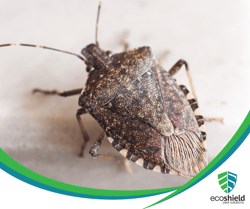 As temperatures continue to drop, many of us find ourselves sharing our living spaces with unexpected guests—stink bugs. These seemingly unassuming insects have a knack for infiltrating our homes, leaving many of us wondering how and why they end up indoors. In this blog post, we'll explore the world of stink bugs, uncovering the reasons behind their sudden appearance in our living spaces. From their unique behaviors to the environmental factors that drive them indoors, understanding the ins and outs of stink bugs can help you take proactive steps to keep your home bug-free and cozy during the colder months.
As temperatures continue to drop, many of us find ourselves sharing our living spaces with unexpected guests—stink bugs. These seemingly unassuming insects have a knack for infiltrating our homes, leaving many of us wondering how and why they end up indoors. In this blog post, we'll explore the world of stink bugs, uncovering the reasons behind their sudden appearance in our living spaces. From their unique behaviors to the environmental factors that drive them indoors, understanding the ins and outs of stink bugs can help you take proactive steps to keep your home bug-free and cozy during the colder months.
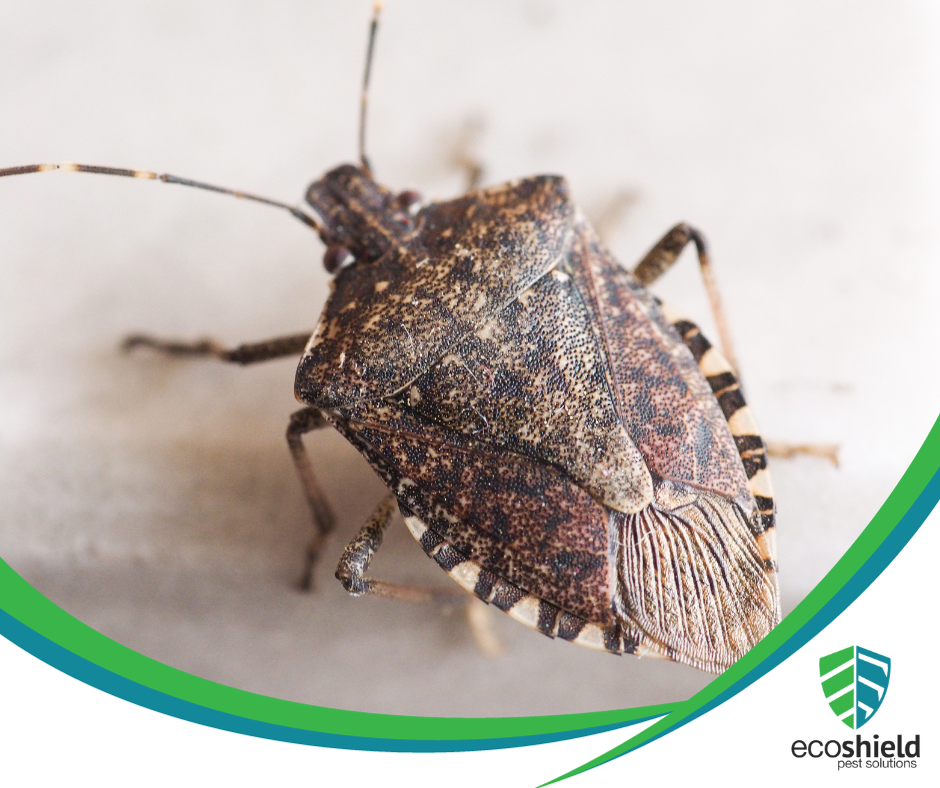
What are Stink Bugs?
Stink bugs, scientifically known as Pentatomidae, are insects that belong to a family characterized by their distinctive shield-shaped bodies. These small to medium-sized bugs are typically brown or green in color and are equipped with specialized scent glands that emit a foul odor when threatened or crushed—hence their name. Native to Asia, stink bugs first made their way to the United States in the late 1990s, becoming an increasingly common household pest. With a lifespan of around six months, these insects go through a life cycle that includes egg, nymph, and adult stages.
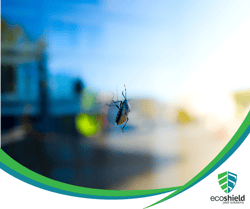 One of the unique aspects of stink bug behavior is their attraction to warmth. As temperatures drop in the fall, these pests seek shelter indoors to escape the cold. They often congregate on the sun-exposed sides of buildings, finding their way inside through small cracks, gaps, or openings. Once inside, stink bugs enter a state of dormancy, slowing down their metabolism to conserve energy during the winter months. While seemingly harmless, this behavior can lead to large infestations if left unaddressed.
One of the unique aspects of stink bug behavior is their attraction to warmth. As temperatures drop in the fall, these pests seek shelter indoors to escape the cold. They often congregate on the sun-exposed sides of buildings, finding their way inside through small cracks, gaps, or openings. Once inside, stink bugs enter a state of dormancy, slowing down their metabolism to conserve energy during the winter months. While seemingly harmless, this behavior can lead to large infestations if left unaddressed.
Despite their seemingly benign presence, stink bugs can pose several problems for homeowners. Firstly, the foul-smelling odor they release as a defense mechanism can be both unpleasant and persistent, lingering on surfaces and fabrics. Additionally, their sheer numbers can make them a nuisance, as they gather in large groups within the home's interior. While stink bugs do not bite humans or cause structural damage to homes, their presence can become a considerable annoyance, especially during the colder seasons when they seek refuge indoors. Homeowners may contend with the challenge of managing these infestations to maintain a comfortable living environment. This can be especially true for households with children and pets.
Why do stink bugs come indoors in the winter?
Stink bugs have a troublesome habit of cozying up indoors when winter rolls around, and it turns out it's all about survival. Picture this: as the temperatures outside take a nosedive, these little guys, who rely on external heat to keep their cool, start feeling the chill. Seeking warmth becomes their top priority, and that's when they start eyeing our homes as their winter retreat.
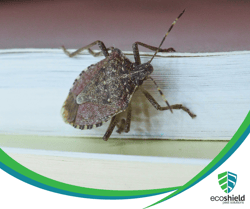 Come fall, stink bugs go into what's called "overwintering" mode. It's basically their way of finding a snug place to wait out the colder months when their usual grub becomes scarce. Our homes, with their stable and toasty interiors, become their ultimate hideout. They particularly love the sunny sides of buildings, and once they've snuck in through gaps or cracks, they hit the snooze button on their bug activities, waiting for the weather to warm up before getting back to their usual bug business.
Come fall, stink bugs go into what's called "overwintering" mode. It's basically their way of finding a snug place to wait out the colder months when their usual grub becomes scarce. Our homes, with their stable and toasty interiors, become their ultimate hideout. They particularly love the sunny sides of buildings, and once they've snuck in through gaps or cracks, they hit the snooze button on their bug activities, waiting for the weather to warm up before getting back to their usual bug business.
Now, while stink bugs aren't out to nibble on us or wreck our homes, their indoor escapades can be a bit of a headache for homeowners. Understanding that these little invaders are just on a quest for warmth highlights the need for some smart preventive measures to keep them from turning our cozy spaces into bug hangouts.
How do stink bugs get inside my home?
Stink bugs have this knack for sneaking into our homes through all kinds of little nooks and crannies. When it's warm outside, they hang out doing their bug thing. But when things cool down in the fall, they're on a mission to escape the chill and cozy up indoors. These little guys love chilling on the sunny sides of buildings, and when they spot a potential way in, like cracks in windows or gaps around doors, they go for it. Their small size makes it easy for them to slip through these openings like tiny insect ninjas.
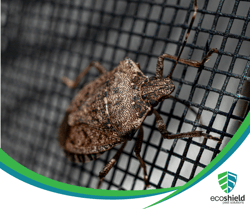 These bugs are like home invasion experts, finding weak spots in the exterior, like damaged window screens, not-so-tight doors, or openings around pipes. They're super determined to find warmth, so any small opening is fair game. Sometimes, we unintentionally invite them in by leaving doors or windows open, giving these opportunistic bugs a free pass into our homes.
These bugs are like home invasion experts, finding weak spots in the exterior, like damaged window screens, not-so-tight doors, or openings around pipes. They're super determined to find warmth, so any small opening is fair game. Sometimes, we unintentionally invite them in by leaving doors or windows open, giving these opportunistic bugs a free pass into our homes.
Once they're inside, stink bugs head for the warm and cozy spots, like attics, wall spaces, or behind baseboards. During the colder times, they go into hibernation mode, waiting for the temperatures to rise before returning to their bug business. Dealing with these invaders means playing defense—identifying and sealing up those entry points, fixing damaged screens, and using other tricks to keep these persistent bugs from making our homes their winter getaway. Knowing how they sneak in is key for homeowners trying to keep their spaces bug-free.
Can I prevent stink bugs in my home?
Absolutely! While it's challenging to completely eliminate the possibility of stink bugs finding their way into your home, there are several preventive measures you can take to significantly reduce the likelihood of an infestation. First off, sealing up any potential entry points is crucial. Check for and fix gaps or cracks in windows, doors, siding, and around utility pipes. Ensuring your window screens are intact and properly sealed can also be a game-changer.
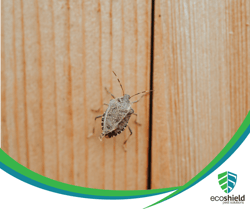 Additionally, consider applying weather stripping around windows and doors to create a tighter seal. Stink bugs are attracted to light, so using yellow light bulbs outdoors can be less appealing to them than white bulbs. When the temperatures start to drop, make sure to close doors and windows promptly, and inspect your home's exterior for any openings that might serve as an entry point.
Additionally, consider applying weather stripping around windows and doors to create a tighter seal. Stink bugs are attracted to light, so using yellow light bulbs outdoors can be less appealing to them than white bulbs. When the temperatures start to drop, make sure to close doors and windows promptly, and inspect your home's exterior for any openings that might serve as an entry point.
If you have a garden, keep it tidy and clear away vegetation close to your home, as stink bugs are drawn to these areas. Regularly vacuuming and sweeping your home, especially near entry points, can help remove any stink bugs that might have found their way inside. If you encounter a stink bug, avoid crushing it, as it releases an unpleasant odor when threatened.
While stink bugs are persistent, these preventive steps can go a long way in minimizing their intrusion into your living space. Taking proactive measures before the fall sets in will help you enjoy a bug-free home during the colder months.
Can EcoShield prevent or remove stink bugs?
Yes! At EcoShield, we're all about keeping it simple and effective. We believe that stopping stink bugs before they even get started is the best way to go. That's why our Home Shield Protection Plan has got your back all year round, giving you a solid defense against not just stink bugs but all sorts of pests that might bug you.
Got some stink bugs hanging around already? No worries! EcoShield has a personalized plan to kick them out and ensure they don't return. Our team is ready to create a special prevention plan just for you, tailored to fit your unique situation.
Whether you want to keep your place bug-free or need a quick solution for those pesky stink bugs, EcoShield is the friend you can count on for all things pest-related. Give us a shout with a call or fill out the form on this page – let's get started on making your home a bug-free zone. Contact EcoShield today and take that first step towards a pest-free life!